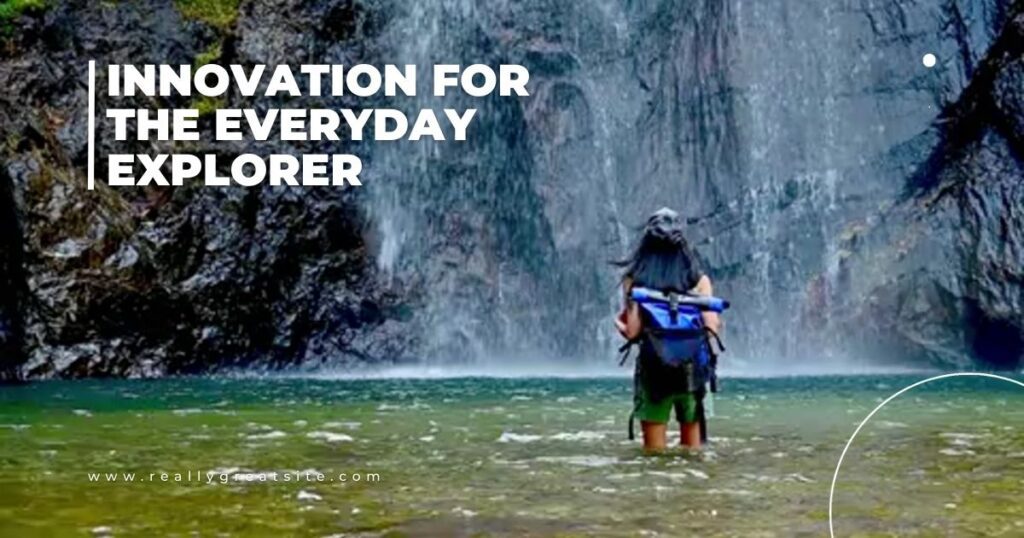The Spark (1987)
Picture a cramped garage in Christchurch, New Zealand. Young John Pawson isn’t just dreaming of epic adventures, he’s itching to make them happen. But his gear keeps holding him back: bulky packs that cause aches, flimsy tents that collapse in a downpour, and overpriced fleeces that don’t deliver on warmth. Frustrated by outdoor gear that seemed either poorly designed or prohibitively expensive, he sees a gap that needs filling. His mission becomes clear: create gear that empowers outdoor adventures, not hinders them.
His first creations are hand-sewn fleece jackets – humble beginnings for a future outdoor empire, but driven by a newfound purpose.
Table of contents
Kathmandu Takes Shape
That spark of DIY ingenuity quickly ignited. Kathmandu’s early days were scrappy. Pawson and his small team scoured army surplus stores for materials and sold directly at markets. They listened, adapted, and grew their range. This customer-first approach would become ingrained in their DNA.
Innovation for the Everyday Explorer

Kathmandu didn’t aim to outfit only those conquering Everest. Their mission was to empower everyone to embrace the outdoors, from weekend bushwalks to multi-day treks. This meant balancing technical performance with accessibility in both design and price point.
“I always felt intimidated by ‘serious’ outdoors stores,” confesses Sarah, a keen hiker. “Kathmandu was different. Their packs were just as tough as those fancy brands, but came in colors I liked, and the staff actually helped me find the right size.”
Families found their gear durable enough for rambunctious kids yet affordable enough to outfit everyone. Seasoned trekkers appreciated the tech specs, while newcomers found the jargon-free advice and approachable designs less intimidating. This focus on inclusivity opened the world of outdoor adventure to a much wider audience.
Key Success Factors
- In-House Design: Kathmandu controls its product creation from concept to store shelf. This allows for constant innovation and responsiveness to customer needs.
- Rigorous Testing: If it didn’t survive the harsh New Zealand wilderness, it wasn’t Kathmandu-worthy. Their reputation for reliable gear was built on this.
- Community Connection: They didn’t just sell gear; they fueled a passion for adventure through events, their Summit Club (loyalty program), and inspirational content. Kathmandu understands that gear is just one part of the adventure. Similar to how Les Mills fosters a global fitness community, they inspire and connect outdoor enthusiasts through events and their Summit Club
- Sustainability Focus: Early champions of environmentally conscious practices, this aligned with their audience and set them apart in the outdoor industry.

Expansion & Evolution
The 1990s and 2000s saw rapid growth. Kathmandu embraced a bold retail model, with large-format destination stores offering their expansive range. They recognized a kindred spirit in adventure-loving Australians, and expansion across the Tasman Sea was a natural next step.
However, it wasn’t simply a copy-and-paste approach. Kathmandu meticulously adapted their product lines to suit Australia’s diverse climate, offering lighter-weight gear for warmer conditions. They invested heavily in understanding local competitors and carefully selecting store locations to maximize visibility.
Building brand recognition in a new market posed its own challenge. Australians were already familiar with outdoor brands. Kathmandu doubled down on its core strengths: product quality, a welcoming in-store experience, and its commitment to making outdoor adventure accessible to all. This resonated with Australian customers and fueled their growth.
Like many successful Kiwi businesses, including the innovative accounting software Xero, Kathmandu recognized the potential of the Australian market. However, they understood that expansion wasn’t just about crossing the Tasman sea. Adapting to the nuances of Australia’s climate, tailoring their product offerings, and investing in market research were crucial in establishing them as a major player in Australasia.
Challenges and Resilience
No journey is without its setbacks. The economic downturn of 2008 hit Kathmandu hard. However, a renewed focus on their core values and a dedication to affordability helped them weather the storm and remain a beloved brand.
Kathmandu Today
Now a publicly-traded company with hundreds of stores, Kathmandu remains a household name in outdoor adventure. While their product lines have evolved with technology (think ultra-light tents and high-tech fabrics), the spirit remains the same – to make the outdoors accessible for everyone.
Lessons from Kathmandu
Kathmandu’s journey offers valuable insights for aspiring entrepreneurs:
- Passion is Your Compass: Pawson’s love for the outdoors wasn’t just a hobby; it fueled his company’s purpose. Tip: Identify a problem you’re genuinely passionate about solving; this will sustain you through the ups and downs of entrepreneurship.
- Know Your Audience: Their focus on ‘everyday adventurers’ shaped their products, in-store experience, and marketing. Tip: Don’t try to be everything to everyone. Define your ideal customer and tailor every aspect of your business to their needs.
- Quality Isn’t Optional: They prioritized well-made gear, even in their early days. This built trust and customer loyalty. Tip: Invest in quality from day one, even if it means starting with a smaller product range. A reputation for reliable products will take you far.
- Embrace the Long Game: Success wasn’t overnight. They grew steadily, reinvesting profits back into innovation and expansion. Tip: Don’t chase after get-rich-quick schemes. Focus on building a sustainable business and let consistent growth be your reward.
- Adapt and Innovate: The outdoor market evolved, and so did Kathmandu. Their dedication to constant improvement has kept them ahead of the curve. Tip: Regularly seek customer feedback, and be willing to pivot your products or strategy when needed.
Want more inspiration? Check out these other incredible tales of small business success
